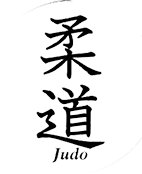By Steve Scott
CRASH PADS FOR THROWING PRACTICE (WHY I USE THEM)
Somewhere about 1973 or 1974, Welcome Mat was the first judo club to use crash pads for throwing practice in the Kansas City area. In fact, not many people used crash pads anywhere in the United States. At that time, I was criticized for using crash pads by just about everyone (except the people in my club and other clubs using crash pads who had improved throwing skills)-By the way, I still pay about as much attention to critics now as I did then. That was back in the 1970s. Funny thing is, there are people who weren't even born then who say the same old tired criticism now that was said back then by people who are old enough to be their parents. Here are some reasons why I use crash pads to train my athletes.
Volume and Safety
Crash pad training allows everyone on the mat to do more throws safely. Here are two important points. You can do more throws on a crash pad than throwing only on the mat (tatami). After a while, landing on the mat takes its toll on anyone-even tough guys who say otherwise. By using crash pads, everyone on the mat can perform a lot more throws-and the result is that the level of technical skill improves. An increased volume of throwing practice translates to an increased development of functional skill.
Anyone who says that power is not what judo is about simply doesn't know what the word power means. Power does not mean brute strength or lack of technical skill as critics contend. The ballistic effect generate by a throwing technique is tremendous and demonstrates the skill, movement and strength inherent in a good throwing technique.
As far as safety is concerned, not only are there less injuries during practice when using crash pads, both in the short term and over the long haul of years of training, the body doesn't take as much punishment by landing on 8 inches of foam (in the crash pad) on top of the actual tatami than by landing only on the tatami. Sure, performing good breakfalls when taking a throw is important, but (as will be pointed out again later) the added level of safety in using crash pads definitely reduces injuries in practice.
Functional Skill
Anyone who uses crash pads can (and will) develop harder and more effective throws. The 8 inches of foam certainly helps cushion the fall for your partner when you drill him with that Uchi Mata, O Soto Gari or any other throw and it will provide the same cushion for you when he takes his turn to throw you. This means that you can develop more plyometric (explosive) power when throwing. I don't care what anyone says, the idea of a throw is to finish the fight. Throwing an opponent softly (in a match or real fight) is the antithesis of what the concept of Nage Waza (throwing Techniques) entails. A good analogy is boxing. Boxers use a punching bag to develop their punches in the same way judo, sambo, jujitsu and grappling athletes use a crash pad to develop their throws. Boxers don't train to hit an opponent softly, they train to hit an opponent hard. Crash pad training allows us to develop the full ballistic effect of a throwing technique.
More on Safety
Some people will say that using Ukemi is sufficient and good breakfalls negate the usefulness of crash pads. Okay, learning how to land safely is a necessity-that is a fact. But anyone who has taken a lot of falls on the tatami quickly finds out that, even with perfect breakfalling skills, taking repeated throws from partners in practice takes its toll on even the toughest guys' bodies. After a while, people get gun-shy and avoid throwing practice or simply stop coming to practice and take up something more docile, like spending too much time watching Youtube videos of judo instead of actually showing up to practice. So, my point is that using crash pads adds another level of safety in training to Ukemi (this was mentioned earlier).
Use Crash Pads Wisely
Do not limit your throwing practice to the use of crash pads only. By all means, work on throwing techniques and skills when moving freely about the mat to improve timing, spatial awareness and other important factors in throwing. In the same way boxers do not exclusively use heavy punching bags to develop their punching skills, judo, sambo, jujitsu and other grapplers should not limit themselves to exclusively doing throwing practice on crash pads. Like any training tool, use crash pads in an overall plan of training and development.
Uchikomi
I don't care what anyone says. Doing a lot of Uchikomi (fit-in practice) instead of Nagekomi (throwing practice) is not a good substitute for actually doing throws to develop technical skill. I'm not against Uchikomi-I'm just against replacing throwing practice with a lot of fit-ins. The old adage "do more Uchikomi" only works for a (short) while. That's been the advice given by people when they didn't have an answer to a question about a throw. I've been to clubs where they did lots and lots of Uchikomi and only a few actual throws. Maybe you've been to one of those clubs as well. Again, don't get me wrong. Uchikomi training has its definite place in any fighting sport, but too much Uchikomi training translates directly into athletes who do not finish their throws and (for the most part) have their throwing attacks more easily blocked by an opponent or do not follow through enough at the end of a throwing attack to get the job done. Others can do what they want, but I want my students and athletes to develop more functional skills in throwing, so we'll keep working on our crash pads



